Photo

In 1889 the Chicago White Stockings pose at the Sphinx before their ballgame in Giza on a world tour.
610 notes
·
View notes
Photo
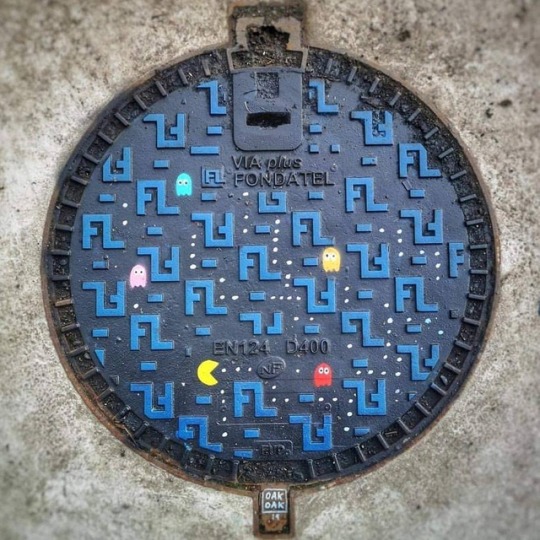
• ARTIST . OAKOAK •
◦ Pacman Level 1 ◦
location: Lievin, France
@streetartsavemylife
@oakoak_street_art
#oakoak #pacman #8bitgames #atari #atari2600 #pacmantattoo #pacmanfrog #pacmanworld #bonus #joystick #lievin #france #placement #urbanart #streetart #streetartsavemylife #sasml
https://www.instagram.com/p/BvRP2_mgCf5/?utm_source=ig_tumblr_share&igshid=dns0w11yjq2d
446 notes
·
View notes
Photo
#pagan





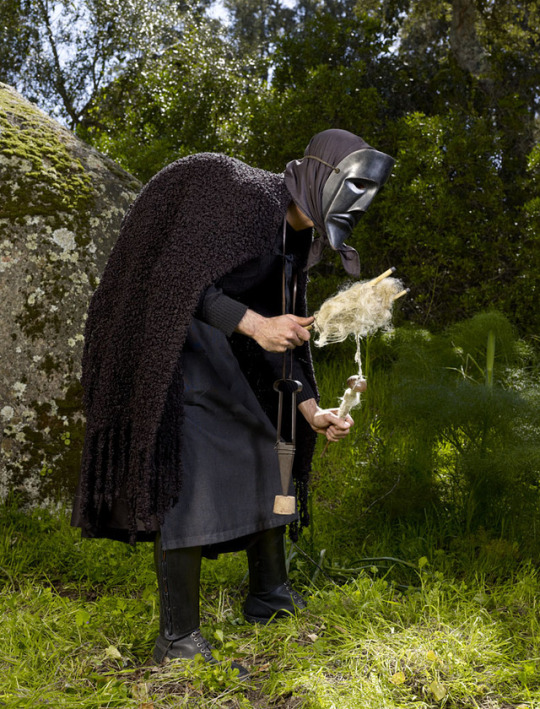



Charles Freger photographed and travelled through 19 countries to collect this stunning collection of photos of European Pagan Rituals surviving to this day.
83K notes
·
View notes
Photo

#colors . . . #colours . . . #colores #berry #berries #bury https://www.instagram.com/p/BnhRJZXFCe5/?utm_source=ig_tumblr_share&igshid=uzjjf5qv5z34
0 notes
Text
Why Won’t Our Parker Solar Probe Melt?
This summer, our Parker Solar Probe will launch to travel closer to the Sun than any mission before it, right into the Sun’s outer atmosphere, the corona.
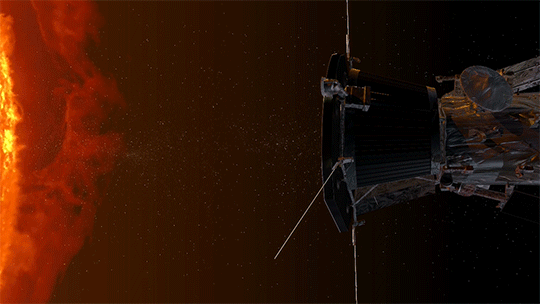
The environment in the corona is unimaginably hot: The spacecraft will travel through material with temperatures greater than 3 million degrees Fahrenheit.
So…why won’t it melt?
The Difference Between Heat and Temperature
Parker Solar Probe was designed from the ground up to keep its instruments safe and cool, but the nature of the corona itself also helps. The key lies in the difference between heat and temperature.
Temperature measures how fast particles are moving, while heat is the total amount of energy that they transfer. The corona is an incredibly thin and tenuous part of the Sun, and there are very few particles there to transfer energy – so while the particles are moving fast (high temperature), they don’t actually transfer much energy to the spacecraft (low heat).
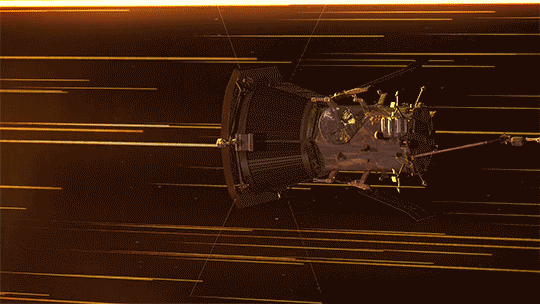
It’s like the difference between putting your hand in a hot oven versus putting it in a pot of boiling water (don’t try this at home!). In the air of the oven, your hand doesn’t get nearly as hot as it would in the much denser water of the boiling pot.
So even though Parker Solar Probe travels through a region with temperatures of several million degrees, the surface of its heat shield will reach only about 2,500 F.

The Heat Shield
Of course, thousands of degrees Fahrenheit is still way too hot for scientific instruments. (For comparison, lava from volcano eruptions can be anywhere between 1,300 to 2,200 F.)
To withstand that heat, Parker Solar Probe is outfitted with a cutting-edge heat shield, called the Thermal Protection System. This heat shield is made of a carbon composite foam sandwiched between two carbon plates. The Sun-facing side is covered with a specially-developed white ceramic coating, applied as a plasma spray, to reflect as much heat as possible.

The heat shield is so good at its job that even though the Sun-facing side of the shield will be at 2,500 F, the instruments in its shadow will remain at a balmy 85 F.
Parker Solar Probe Keeps its Cool
Several other designs on the spacecraft help Parker Solar Probe beat the heat.
Parker Solar Probe is not only studying the Sun – it’s also powered by it. But even though most of the surface area of its solar arrays can be retracted behind the heat shield, even that small exposed segment would quickly make them overheat while at the Sun.
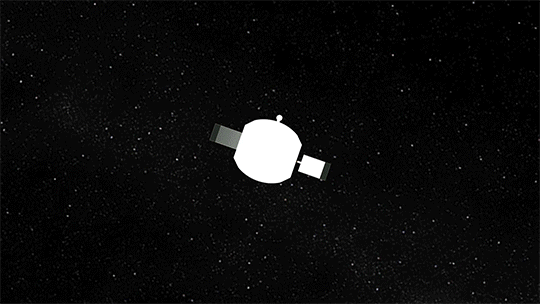
To keep things cool, Parker Solar Probe circulates a single gallon of water through its solar arrays. The water absorbs heat as it passes behind the arrays, then radiates that heat out into space as it flows into the spacecraft’s radiator.
It’s also important for Parker Solar Probe to be able to think on its feet, since it takes about eight minutes for information to travel between Earth and the Sun. If we had to control the spacecraft from Earth, by the time we knew something went wrong, it would be too late to fix it.
So Parker Solar Probe is smart: Along the edges of the heat shield’s shadow are seven sensors. If any of these sensors detect sunlight, they alert the central computer and the spacecraft can correct its position to keep the sensors – and the rest of the instruments – safely protected behind the heat shield.
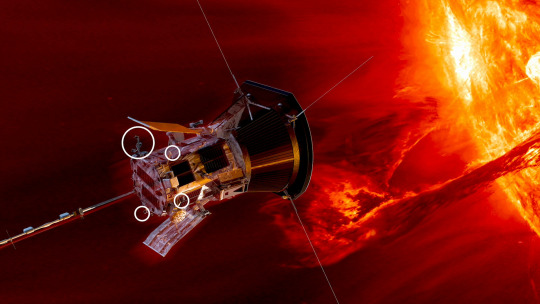
Over the course of its seven-year mission, Parker Solar Probe will make 24 orbits of our star. On each close approach to the Sun, it will sample the solar wind, study the Sun’s corona, and provide unprecedentedly close up observations from around our star – and armed with its slew of innovative technologies, we know it will keep its cool the whole time.
Parker Solar Probe launches summer 2018 on its mission to study the Sun. Keep up with the latest on the mission at nasa.gov/solarprobe or follow us on Twitter and Facebook.
Make sure to follow us on Tumblr for your regular dose of space: http://nasa.tumblr.com
6K notes
·
View notes
Text
What’s Up For August 2018?
The summer Perseids are here!
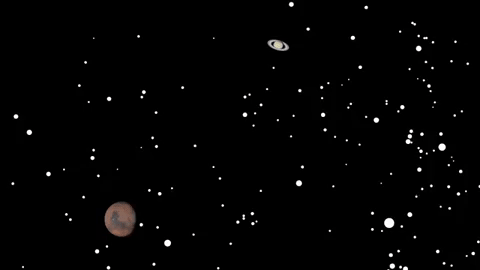
The Perseid meteor shower is the best of the year! It peaks on a Moonless summer night from 4 p.m. EST on August 12 until 4 a.m. EST on August 13.
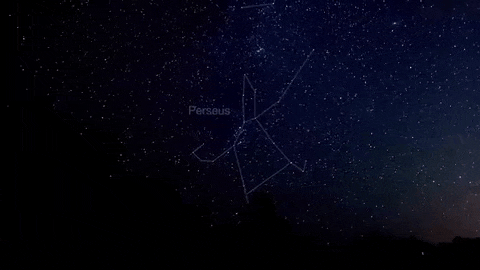
Because the new Moon falls near the peak night, the days before and after the peak will also provide nice, dark skies. Your best window of observation is from a few hours after twilight until dawn, on the days surrounding the peak.
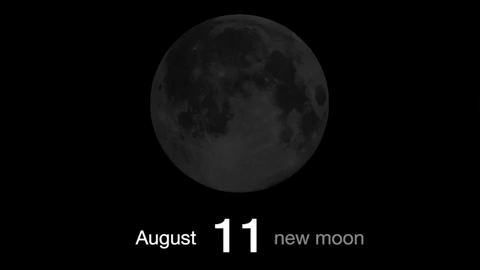
Unlike most meteor showers, which have a short peak of high meteor rates, the Perseids have a very broad peak, as Earth takes more than three weeks to plow through the wide trail of cometary dust from comet Swift-Tuttle.

The Perseids appear to radiate from the constellation Perseus, visible in the northern sky soon after sunset this time of year. Observers in mid-northern latitudes will have the best views.
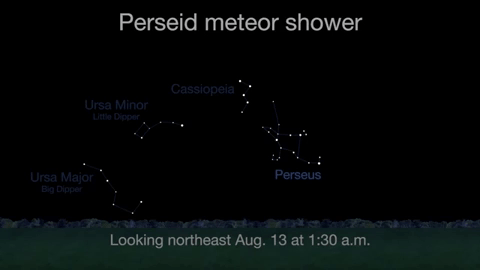
You should be able to see some meteors from July 17 to August 24, with the rates increasing during the weeks before August 12 and decreasing after August 13.
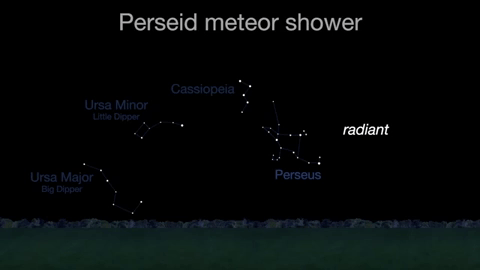
Observers should be able to see between 60 and 70 per hour at the peak. Remember, you don’t have to look directly at the constellation to see them. You can look anywhere you want to-even directly overhead.

Meteor showers like the Perseids are caused by streams of meteoroids hitting Earth’s atmosphere. The particles were once part of their parent comet-or, in some cases, from an asteroid.

The parade of planets Venus, Jupiter, Saturn and Mars–and the Milky Way continue to grace the evening sky, keeping you and the mosquitoes company while you hunt for meteors.

Watch the full What’s Up for August Video:
youtube
There are so many sights to see in the sky. To stay informed, subscribe to our What’s Up video series on Facebook.
Make sure to follow us on Tumblr for your regular dose of space: http://nasa.tumblr.com
5K notes
·
View notes
Photo

#Repost @ouroboros_press with @get_repost ・・・ CALL FOR ART Mortlake and Company is seeking artists to participate in a print exchange and print exhibition which will be on view in our Galley in conjunction with the Texts and Traditions Colloquium this Sept. The print exchange theme is ASCENT THROUGH DESCENT. Interested print artists should direct message this account with their email or inquiry may be sent via [email protected] Full details will be sent out on May First. #esotericart #occultart #letterpress #woodcuts #etching #printexchange Image: Benjamin A. Vierling #cosmos means #beauty #hermeticgenetics #duartecannabaceae
#printexchange#beauty#repost#cosmos#hermeticgenetics#duartecannabaceae#esotericart#letterpress#woodcuts#occultart#etching
0 notes
Photo






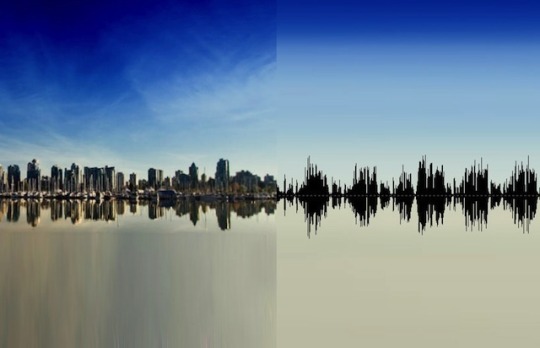

Artist Matches Sound Waves With Their Counterparts In Nature
As the digital and physical worlds become increasingly intertwined, it can sometimes become difficult to distinguish the differences between the two. CGI is becoming scarily realistic, and 3D-printing allows a person with the right tools to literally pluck an object from the digital world and place it in the physical one. Art has consistently acted as a blurring point on the line between digital and physical, as evidenced by Ukrainian designer Anna Marinenko’s sound wave composites.
Marinenko, “observed the aesthetic similarity between the oscillating heights of mountains, trees and skylines and the waveforms of music,” according to DesignBoom, and thus set out to compose a comparison that would highlight the visions she saw in the trees, buildings, and mountains around her. The way she lines sound wavelengths up with the stellar photographs of a mountainous horizon or the wake of a motorboat makes the comparison seem so natural, the viewer feels ridiculous for not making the connection sooner.
Via Creators Project
439 notes
·
View notes
Text
10 Ways to Celebrate Pi Day with Us on March 14
Make sure to follow us on Tumblr for your regular dose of space: http://nasa.tumblr.com. On March 14, we will join people across the U.S. as they celebrate an icon of nerd culture: the number pi.
So well known and beloved is pi, also written π or 3.14, that it has a national holiday named in its honor. And it’s not just for mathematicians and rocket scientists. National Pi Day is widely celebrated among students, teachers and science fans, too. Read on to find out what makes pi so special, how it’s used to explore space and how you can join the celebration with resources from our collection.

1—Remind me, what is pi?
Pi, also written π, is the Swiss Army knife of numbers. No matter how big or small a circle – from the size of our universe all the way down to an atom or smaller – the ratio of a circle’s circumference (the distance around it) to its diameter (the distance across it) is always equal to pi. Most commonly, pi is used to answer questions about anything circular or spherical, so it comes in handy especially when you’re dealing with space exploration.

2—How much pi do you need?
For simplicity, pi is often rounded to 3.14, but its digits go on forever and don’t appear to have any repeating patterns. While people have made it a challenge to memorize record-breaking digits of pi or create computer programs to calculate them, you really don’t need that many digits for most calculations – even at NASA. Here’s one of our engineers on how many decimals of pi you need.

3—Officially official.
Pi pops up in everything from rocket-science-level math to the stuff you learn in elementary school, so it’s gained a sort of cult following. On March 14 (or 3/14 in U.S. date format) in 1988, a physicist at the San Francisco Exploratorium held what is thought to be the first official Pi Day celebration, which smartly included the consumption of fruit pies. Math teachers quickly realized the potential benefits of teaching students about pi while they ate pie, and it all caught on so much that in 2009, the U.S. Congress officially declared March 14 National Pi Day. Here’s how to turn your celebration into a teachable moment.
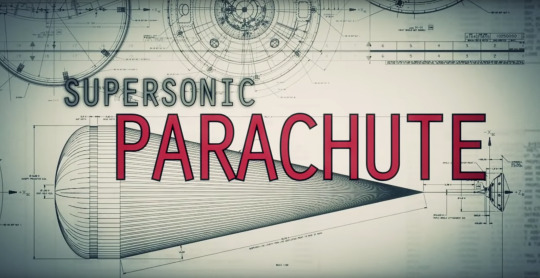
4—Pi helps us explore space!
Space is full of circular and spherical features, and to explore them, engineers at NASA build spacecraft that make elliptical orbits and guzzle fuel from cylindrical fuel tanks, and measure distances on circular wheels. Beyond measurements and space travel, pi is used to find out what planets are made of and how deep alien oceans are, and to study newly discovered worlds. In other words, pi goes a long way at NASA.
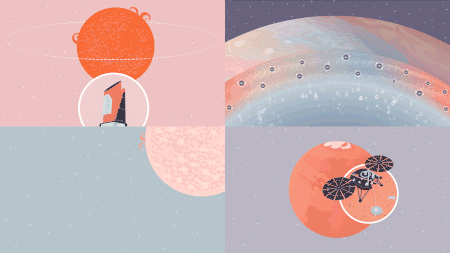
5—Not just for rocket scientists.
No Pi Day is complete without a little problem solving. Even the math-averse will find something to love about this illustrated math challenge that features real questions scientists and engineers must answer to explore and study space – like how to determine the size of a distant planet you can’t actually see. Four new problems are added to the challenge each year and answers are released the day after Pi Day.

6—Teachers rejoice.
For teachers, the question is not whether to celebrate Pi Day, but how to celebrate it. (And how much pie is too much? Answer: The limit does not exist.) Luckily, our Education Office has an online catalog for teachers with all 20 of its “Pi in the Sky” math challenge questions for grades 4-12. Each lesson includes a description of the real-world science and engineering behind the problem, an illustrated handout and answer key, and a list of applicable Common Core Math and Next Generation Science Standards.
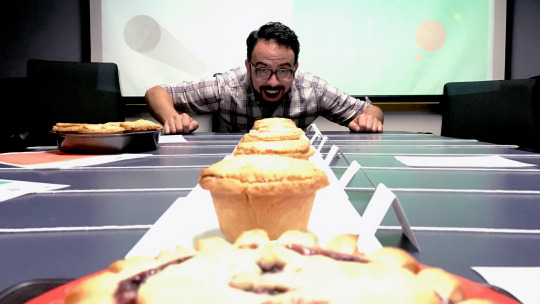
7—How Do We celebrate?
In a way, we celebrate Pi Day every day by using pi to explore space. But in our free time, we’ve been known to make and eat space-themed pies, too! Share your own nerdy celebrations with us here.
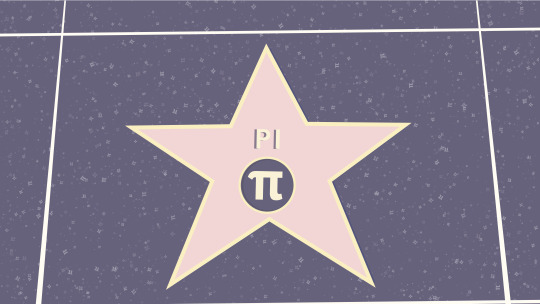
8—A pop-culture icon.
The fascination with pi, as well its popularity and accessibility have made it a go-to math reference in books, movies and television. Ellie, the protagonist in Carl Sagan’s book “Contact,” finds a hidden message from aliens in the digits of pi. In the original “Star Trek” series, Spock commanded an alien entity that had taken over the computer to compute pi to the last digit – an impossible task given that the digits of pi are infinite. And writers of “The Simpsons,” a show known for referencing math, created an episode in which Apu claims to know pi to 40,000 digits and proves it by stating that the 40,000th digit is 1.
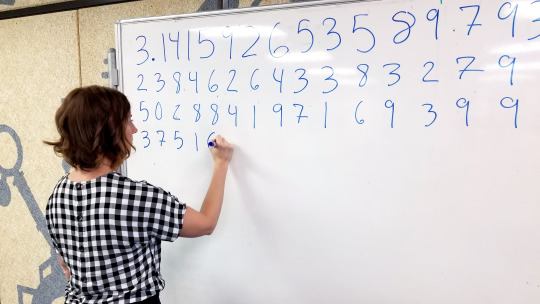
9—A numbers game.
Calculating record digits of pi has been a pastime of mathematicians for millennia. Until the 1900s, these calculations were done by hand and reached records in the 500s. Once computers came onto the scene, that number jumped into the thousands, millions and now trillions. Scientist and pi enthusiast Peter Trueb holds the current record – 22,459,157,718,361 digits – which took his homemade computer 105 days of around-the-clock number crunching to achieve. The record for the other favorite pastime of pi enthusiasts, memorizing digits of pi, stands at 70,030.

10—Time to throw in the tau?
As passionate as people are about pi, there are some who believe things would be a whole lot better if we replaced pi with a number called tau, which is equal to 2π or 6.28. Because many formulas call for 2π, tau-enthusiasts say tau would provide a more elegant and efficient way to express those formulas. Every year on Pi Day, a small debate ensues. While we won’t take sides, we will say that pi is more widely used at NASA because it has applications far beyond geometry, where 2π is found most often. Perhaps most important, though, for pi- and pie-lovers alike is there’s no delicious homonym for tau.
Enjoy the full version of this article HERE.
Make sure to follow us on Tumblr for your regular dose of space: http://nasa.tumblr.com.
4K notes
·
View notes
Link
56 notes
·
View notes
Photo




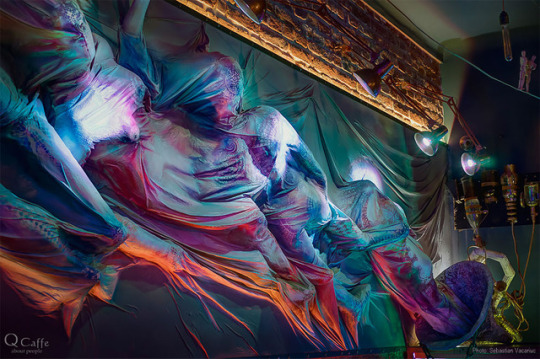





Bunch Of Artists Unite To Design The Interior Of This Surreal Bar And The Details Are Incredible
18 notes
·
View notes
Link
US investigator of ivory, rhino horn trade killed in Kenya http://flip.it/22oNGA
0 notes
Photo
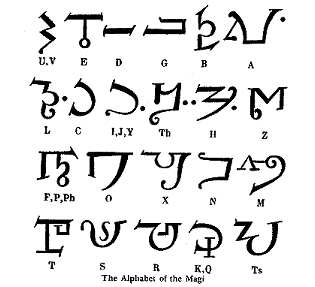



Occult Script: The Alphabet of the Magi
Invented by Theophrastus Bombastus von Hohenheim (Paracelsus) in the 16th century. He used it to engrave the names of angels on talismans which he claimed could treat illnesses and provide protection.
2K notes
·
View notes
Text
Our Most “Liked” Instagram Posts of 2017
Our Instagram page has over 2,200 images and is lucky enough to be followed by more than 29 million fans.
What images and videos were your favorite from this past year? Great question, and one we asked ourselves too!
Here’s a look at our most liked Instagram posts* of 2017…Enjoy!
#10 Black Hole Collision

What happens when two supermassive black holes collide? Until last year, we weren’t quite sure. Gravitational waves! With 834,169 likes, this image is our 10th most liked of 2017.
#9 Italy Through the Space Station Cupola Window

European astronaut Paolo Nespoli (@Astro_Paolo) shared this image on social media of “Southern #Italy and Sicily framed by one of our Cupola windows” aboard the International Space Station. This image ranks #9 for 2017 with 847,365 likes.
#8 Black Hole Friday
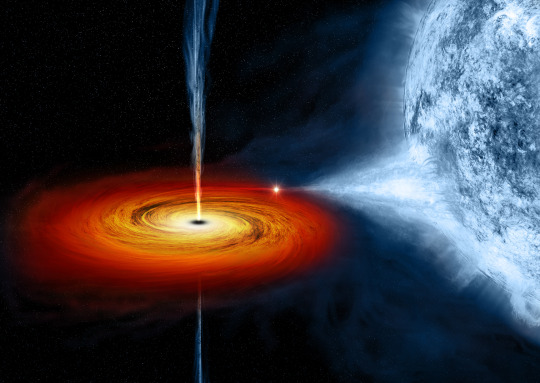
For our 5th annual #BlackHoleFriday we’ll share awesome images and facts about black holes! A black hole is a place in space where gravity pulls so much that even light cannot get out. With 916,247 likes, this picture ranks #8 for 2017.
#7 The Elements of Cassiopeia A

Did you know that stellar explosions and their remains–“supernova remnants”–are a source of chemical elements essential for life here on Earth? A new Chandra X-ray Observatory image captures the location of several vital elements like silicon (red), sulfur (yellow), calcium (green) and iron (purple), located on Cassiopeia A–a supernova remnant ~11,000 light years from Earth. This image ranks #7 for 2017 with 943,806 likes.
#6 Jupiter Blues

Jupiter, you’re bluetiful 💙 ! Churning swirls of Jupiter’s clouds are seen in striking shades of blue in this new view taken by our Juno spacecraft. This image ranks as our sixth most liked Instagram post of 2017 with 990,944 likes.
#5 An Interstellar Visitor

An interstellar visitor…scientists have confirmed that an intriguing asteroid that zipped through our solar system in October is the first confirmed object from another star! Observations suggest that this unusual object had been wandering through the Milky Way, unattached to any star system, for hundreds of millions of years before its chance encounter with our star system. With 1,015,721 likes, this image ranks #5 for 2017.
#4 Space Station Lunar Transit

Space station supermoon. This composite image made from six frames shows the International Space Station, with a crew of six onboard, as it transits the Moon at roughly five miles per second on Dec. 2. This image ranks #4 for 2017 with 1,037,520 likes.
#3 The Space Between Us
A post shared by NASA (@nasa) on Dec 20, 2017 at 2:56pm PST
The beautiful space between Earth and the International Space Station was immortalized by NASA astronaut Mark Vande Hei while orbiting 250 miles above the planet we call home. This majestic image ranks #3 for 2017 with 1,042,403 likes.
#2 The Moon Swallows the Sun
A post shared by NASA (@nasa) on Aug 21, 2017 at 2:03pm PDT
Today, the Sun disappeared, seemingly swallowed by our Moon–at least for a while. The August 21 solar eclipse cut through a swath of North America from coast to coast and those along the path of totality, that is where the Moon completely covered the Sun, were faced with a sight unseen in the U.S. in 99 years. Which might have something to do with this image ranking #2 for 2017 with 1,144,503 likes.
#1 Solar Eclipse Over Cascade Lake
A post shared by NASA (@nasa) on Aug 21, 2017 at 3:57pm PDT
Behold! This progression of the partial solar eclipse took place over Ross Lake, in Northern Cascades National Park, Washington on Monday, Aug. 21, 2017.
This photo was our #1 image of 2017 with 1,471,114 likes!
See them all here!
youtube
Do you want to get amazing images of Earth from space, see distant galaxies and more on Instagram? Of course you do! Follow us: https://www.instagram.com/nasa/
*Posts and rankings are were taken as of Dec. 28, 2017.
Make sure to follow us on Tumblr for your regular dose of space: http://nasa.tumblr.com.
4K notes
·
View notes
Photo
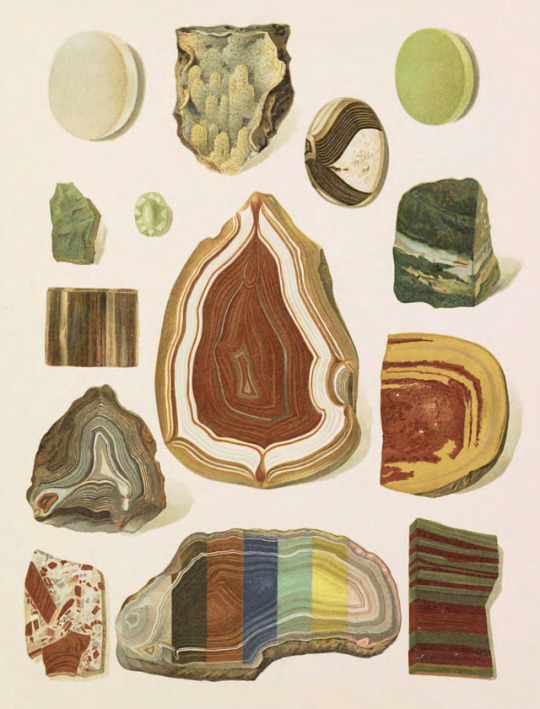



Atlas minerálu - Alexander Bernard - 1907 - via Internet Archive
857 notes
·
View notes

